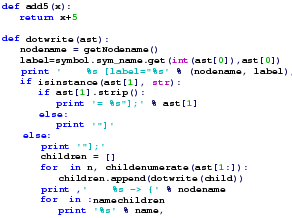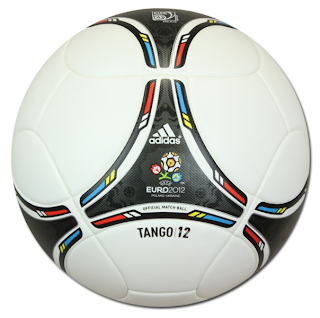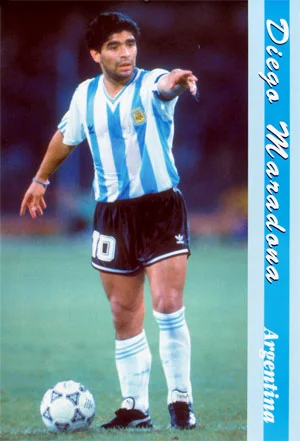 |
| 3D Picture of Home Computer Created By me (Manash Kundu) |
COMPUTERS:
Throughout
the ages people have used calculating machines to help them work out their sums
. One of the very earliest was the Abacus.This simple ,cheap device is still
used in many Asian shops and banks to make calculation at very great speed
.Much more complicated machines have now been built that can do much wider
range of highly complex tasks.
This 3D Animation showing modern Home Computer and its Hardware Components
Before the
Computers:
ABACUS:
The ABACUS, which was
invented about 5,000 years ago in Asia Minor and still in use today, is
considered the first computer. This device allows users to make computation
using a system of sliding beads arranged on a rack. Early merchants used the
abacus to keep trading transactions. But as the use of paper and pencil spread,
particularly to Europe, the abacus lost its importance . It took nearly 12 centuries,
however, for the next significant advance in computing devices to emerge.
 |
| Napier's bone : 1617 is an abacus created by John Napier for calculation of products and quotients of numbers that was based on Arab mathematics |
Napier's bone : 1617 is an abacus created by John Napier for calculation of products and quotients of numbers that was based on Arab mathematics and lattice multiplication used by Matrakci Nasuh in the Umdet-ul Hisab and Fibonacci writing in the Liber Abaci. Also called Rabdology , "rod" and. Napier published his version of rods in a work printed in Edinburgh, Scotland, at the end of 1617 entitled Rabdologiæ. Using the multiplication tables embedded in the rods, multiplication can be reduced to addition operations and division to subtractions. More advanced use of the rods can even extract square roots. Note that Napier's bones are not the same as logarithms, with which Napier's name is also associated.
The
abacus consists of a board with a rim; the user places Napier's rods in the rim
to conduct multiplication or division. The board's left edge is divided into 9
squares, holding the numbers 1 to 9. The Napier's rods consist of strips of
wood, metal or heavy cardboard. Napier's bones are three dimensional, square in
cross section, with four different rods engraved on each one. A set of such
bones might be enclosed in a convenient carrying case.
 |
| The Slide
rule
also known
colloquially (in the US) as a slipstick,is a mechanical analog computer.
|
The Slide
rule:
also known
colloquially (in the US) as a slipstick,is a mechanical analog computer. The
slide rule is used primarily for multiplication and division, and also for
functions such as roots, logarithms and trigonometry, but is not normally used
for addition or subtraction.
 |
| A slide rule positioned so as to multiply by 2. Each number on the D (bottom) scale is double the number above it on the C (middle) scale |
Slide rules come in a
diverse range of styles and generally appear in a linear or circular form with
a standardized set of markings (scales) essential to performing mathematical
computations. Slide rules manufactured for specialized fields such as aviation
or finance typically feature additional scales that aid in calculations common
to that field.
William Oughtred and
others developed the slide rule in the 17th century based on the emerging work
on logarithms by John Napier. Before the advent of the pocket calculator, it
was the most commonly used calculation tool in science and engineering. The use
of slide rules continued to grow through the 1950s and 1960s even as digital
computing devices were being gradually introduced; but around 1974 the
electronic scientific calculator made it largely obsolete and most suppliers
left the business.
THE FIRST
COMPUTER:
The
fastest , most accurate,and most useful machine is the computer. Charles
Babbage built the first computer in the early 19 th century.It was worked by
cogs and levers. It carried out a long series of calculations and printed out
the result.
 |
| Charles Babbage |
Charles
Babbage developed the analytical engine project after an earlier computing
project the difference engine that Babbage started in 1822. The difference
engine could solve polynomial equations using a numerical method called the
"method of differences". However, the analytical engine was the first
general computational device, with the ability to solve different types of
equations. The use of punch cards to record a program was inspired by the
Jacquard loom, which used similar punch cards to control the pattern being
woven by the loom.
Impact of
the Analytical Engine:
During a
public lecture on Charles Babbage held at the University of Witwatersrand,
historian Philip Machanick stated, "What made the analytical engine such a
feat of engineering was that it was built before the discovery of electronics,
and was entirely mechanical. Its memory consisted of gears, while the
processing unit, or mill, consisted of cams, clutches, cranks and gears."
Being
mechanical rather than electrical, the analytical engine worked by a series of
gears and levers. Charles Babbage started building his analytical engine in
1833 and continued to tinker with the machine until the day he died.
Charles
Babbage's motive for inventing the difference engine and analytical engine was
the desire to create absolutely accurate mathematical tables.
Modern
computers rely on electronic devices:The first computer were
built with valves but these were later replaced by transistors.The development
of the integrated circuit revolutionized the computer industry.
 |
| Modern Calculator for Daily Arithmetic Calculation also one type of small Computer |
The
numbers we use every day belong to the decimal system based on groups of ten.
Computers are electronic,using electricity. The simplest way to send an
electrical signal is to switch the electricity on and off. For this
reason,computers use the binary system based on groups of two. Computers
consist of billions of switches which can be on or off. This is the only signal
a computer uses thousands and thousands of times as it does its operations.
Before a
computer can do anything it needs two things.First it needs instruction for
what it is going to do .This is the program. Secondly it needs the information
or data that it is going to work on .These inputs can be made in a variety of
ways .The information is often fed from magnetic tape or disc.Keyboard system
looking like a typewriter are very common .These are usually linked to a visual
display unit or VDU so the operators can see what they are doing.
The data
go first to the computer`s memory.Each piece of data is put in a particular
place which is labelled. This is the address. When the control unit works through the
instructions it removes the data from the store as required . The work on this
data is carried out in the processor. Once the computer has processed the
information it is sent to the output.This might be magnetic tape,disc, or
printer.
PROGRAMMING
LANGUAGES:
Computers
have to be told exactly what to do with the information they receive.This is
the job of people known as programmers.
To write the program they have to use special languages such as Basic, fortran ,cobol and alcol.These languages are not interchangeable.If the programmer makes a mistake the computer will not operate as expected .
 |
| Computer Programming Books |
To write the program they have to use special languages such as Basic, fortran ,cobol and alcol.These languages are not interchangeable.If the programmer makes a mistake the computer will not operate as expected .
 |
| Sample Page of computer programming in Basic Language |
If the
computer gives a silly answer it is the program or the input that is wrong ,
not the computer.
 |
| Abacus |
The abacus
consist moveable beads attached to rods .In this
abacus each bead in the top row of beads equals 5 when lowered in the larger
lower group, each bead equals 1 when raised , skilled abacus operators can
produce answers as fast as some machines.
 |
| Charles Babbage (1792- 1871) |
Charles
Babbage (1792- 1871) . The inventor of the computer. His
first computer was called a difference engine.The government gave him money to
built this machine . However , he lost interest in it having invented a better machine called an analytical
engine.This was real computer . Since neither engine was ever finished Babbage
died in 1871 a disappointed man.
 |
| The binary system and computers. |
The
binary system and computers. A simple switch has only two
positions. On and off . These can easily be represented in computers as 1 and 0
. Computers then carry out all the mathematical calculations using only these
two numbers (binary arithmetic ) , rather than the 10 numbers that we use
(decimal arithmetic) . 2 is written as 10, 3 as 11 and 4 as 100.We know that this is because down to the most basic component of the computer system is the transistor which can be turned on and off, so 1 represents its on state and 0 represents its off state, the ultimate language of computer. We know that whatever processing we want it to perform the instructions must be converted to this language of 0 and 1, so a simple task like viewing this page could mean millions of individual yes-no instructions that needs to be processed, all represented by strings of 0 and 1.
Major Electronic Components and its work in the Modern Home Computers:
Major Electronic Components and its work in the Modern Home Computers:
COMPUTERS
AT WORK:
Once
integrated circuits had been development they were soon widely used .Compared
with valves, they were cheaper, more reliable , and did not break easily.As
techniques improved , the chips became more powerful and cheaper, Nowadays many
homes, office and factories use equipment that contains silicon chips.
ROM AND
RAM:
Perhaps
you have seen or used video games.These contain a chip programmed with
instructions to play the game .This is the read only memory or ROM. Another chip receives the information
you supply, for example by moving the control lever to move a monster.This is
the random access memory , RAM.This information is processed by the
microprocessor or silicon chip and the result is fed to the television
screen.All this happens in a fraction of a second. The computer then waits for
you to give the next instruction.
 |
| Picture of RAM |
Some
domestic appliances now use microprocessors. A modern mechanical sewing machine
has more than a thousand parts.Some of these , perhaps a half , can be replaced
by a microprocessor,Because this reduces the number of moving parts, there will
be less wear, the machine will be more reliable ,and it will last longer.
 |
| Microchip of CDROM |
As
computers have become cheaper people have been able to buy them to use at
home.With these , you can play video games , look after the family budget, or
do the accounts for a small business.
On big
business,computers are often used for working on large amounts of
information.Banks use them to control their customer`s
accounts which contain millions of pieces of information held on databases.
Customers can use the cash points
which are really VDU s to supply cash or to tell them details of their account
via the computer.
COMPUTER
NETWORKS:
Soon you
will be able to carry out more tasks through such terminals .Shop will have a
bank terminal instead of a till .
When you buy something you will give a bank card or number and the money will be transferred from your account to the shop`s account , soon shops, homes and banks will be linked and you will be able to order and pay for goods and pay your bills without leaving home.They will be part of a computer network.
 |
| Computer Controlled ATM Machine Near Banks and other places |
When you buy something you will give a bank card or number and the money will be transferred from your account to the shop`s account , soon shops, homes and banks will be linked and you will be able to order and pay for goods and pay your bills without leaving home.They will be part of a computer network.
 |
| Computer Controlled Modern Scanning Machine can Display exact Pictures of Human Vital Organs which help Doctors for Diagnosis |
Companies
as well as individuals have access to such networks .At present many office
workers use computer in place of
typewriters .These are called word processors.
Messages can be sent very quickly from one computer to another without having to write a letter.This may lead to the paperless office.In industry microprocessors are used to control equipment.Some work is even done by robots.They are very good at doing the same job over and over again without making a mistake .In an increasing number of car assembly plants,Production line robots spot weld parts of the car body together.They are also used for unpleasant jobs such as paint spraying.Computers have revolutionized the retail trade.Before the computer,it was very difficult to keep track of the stock of the many items sold in large stones .Now a laser scanner at the checkout reads information about the items sold from bar codes on the items . The stock record is automatically updated by computer and more stock ordered when neccessary.
 |
| Computer Controlled Printing Machine |
Messages can be sent very quickly from one computer to another without having to write a letter.This may lead to the paperless office.In industry microprocessors are used to control equipment.Some work is even done by robots.They are very good at doing the same job over and over again without making a mistake .In an increasing number of car assembly plants,Production line robots spot weld parts of the car body together.They are also used for unpleasant jobs such as paint spraying.Computers have revolutionized the retail trade.Before the computer,it was very difficult to keep track of the stock of the many items sold in large stones .Now a laser scanner at the checkout reads information about the items sold from bar codes on the items . The stock record is automatically updated by computer and more stock ordered when neccessary.
 |
| Computer Controlled Robotic Hands For Car manufacturing |
Computer
-guided robots at work in a car-assembly plant . Robots
can be programmed to perform a series of repetitive tasks and so can work on
assembly lines with minimal human supervision.
A robot
can be programmed to make a variety of movements . The arm
can move in and out , be raised and lowered, and be swung from side to side.The
hand can move in lots of different ways too.
 |
| Computer Controlled Robot Asimo |
In the
paperless office , each desk has a computerized workstation.This
combines a telephone .Computer and keyboard. The workstation is connected to a
central computer containing all the computer records, and to other
workstations.
Computers and IBM:
International Business Machines, abbreviated IBM and nicknamed "Big Blue", is a multinational computer technology and IT consulting corporation headquartered in Armonk, New York, United States. The company is one of the few information technology companies with a continuous history dating back to the 19th century. IBM manufactures and sells computer hardware and software (with a focus on the latter), and offers infrastructure services, hosting services, and consulting services in areas ranging from mainframe computers to nanotechnology. Ginni Rometty is the president and CEO of IBM.
IBM has been well known through most of its recent history as one of the world's largest computer companies and systems integrators. With over 388,000 employees worldwide, IBM is one of the largest and most profitable information technology employers in the world. IBM holds more patents than any other U.S. based technology company and has eleven research laboratories worldwide.The company has scientists, engineers, consultants, and sales professionals in over 170 countries. IBM employees have earned five Nobel Prizes, four Turing Awards, five National Medals of Technology, and five National Medals of Science.
 |
| Computer Workstations can do many jobs at same Time |
International Business Machines, abbreviated IBM and nicknamed "Big Blue", is a multinational computer technology and IT consulting corporation headquartered in Armonk, New York, United States. The company is one of the few information technology companies with a continuous history dating back to the 19th century. IBM manufactures and sells computer hardware and software (with a focus on the latter), and offers infrastructure services, hosting services, and consulting services in areas ranging from mainframe computers to nanotechnology. Ginni Rometty is the president and CEO of IBM.
IBM has been well known through most of its recent history as one of the world's largest computer companies and systems integrators. With over 388,000 employees worldwide, IBM is one of the largest and most profitable information technology employers in the world. IBM holds more patents than any other U.S. based technology company and has eleven research laboratories worldwide.The company has scientists, engineers, consultants, and sales professionals in over 170 countries. IBM employees have earned five Nobel Prizes, four Turing Awards, five National Medals of Technology, and five National Medals of Science.
 |
| The original IBM PC (ca. 1981) |














































































 Online Movies
Online Movies